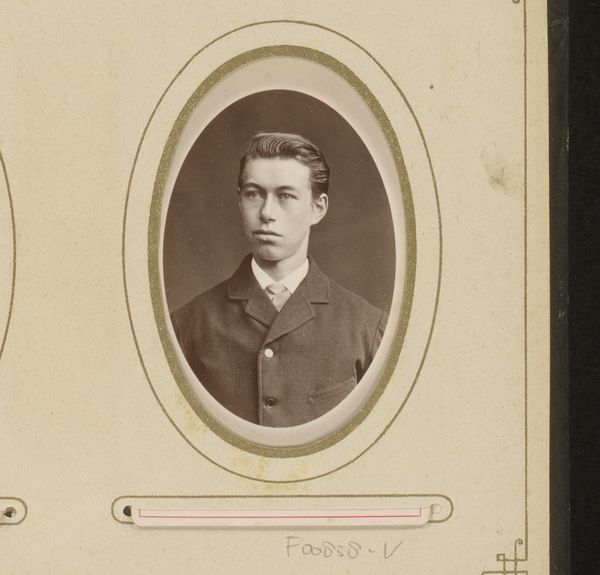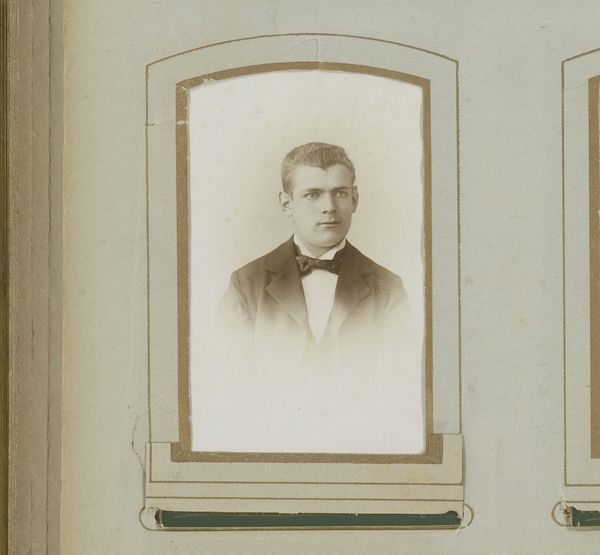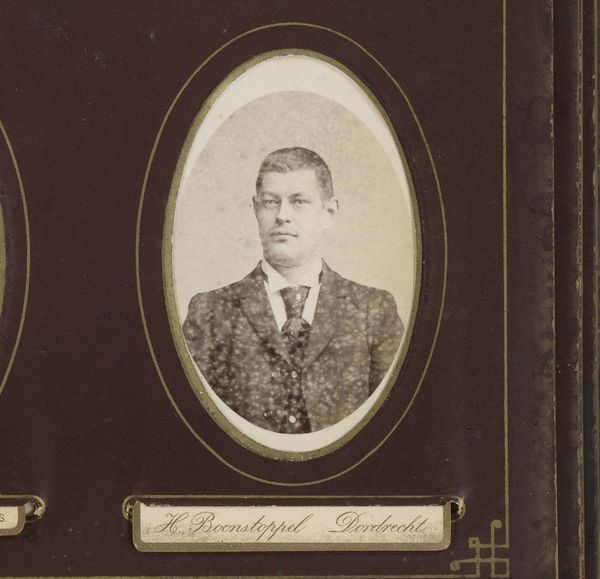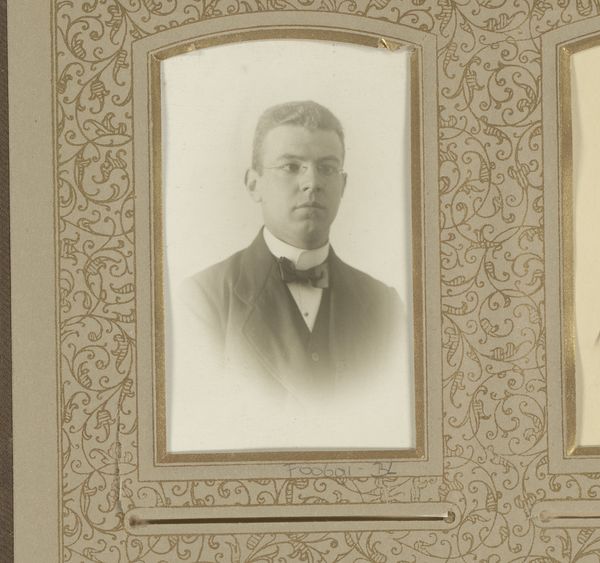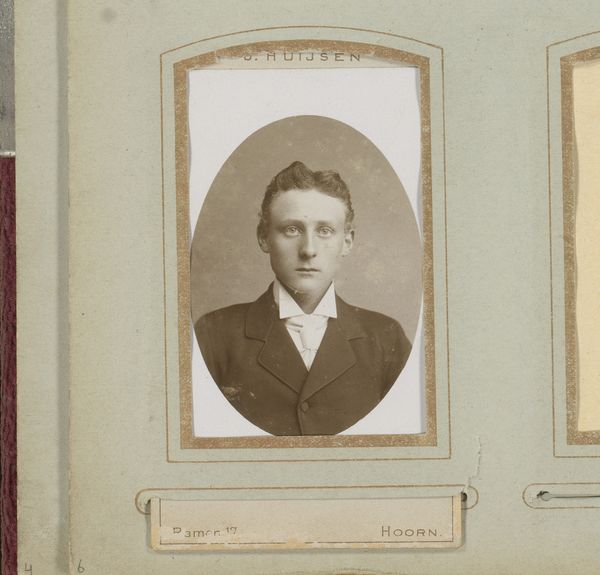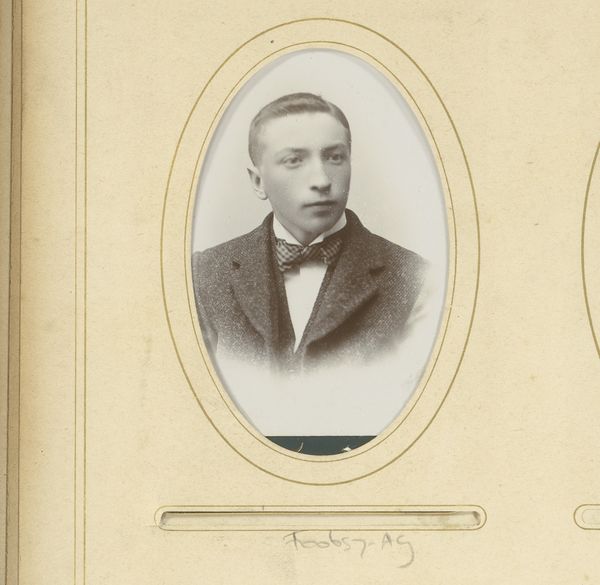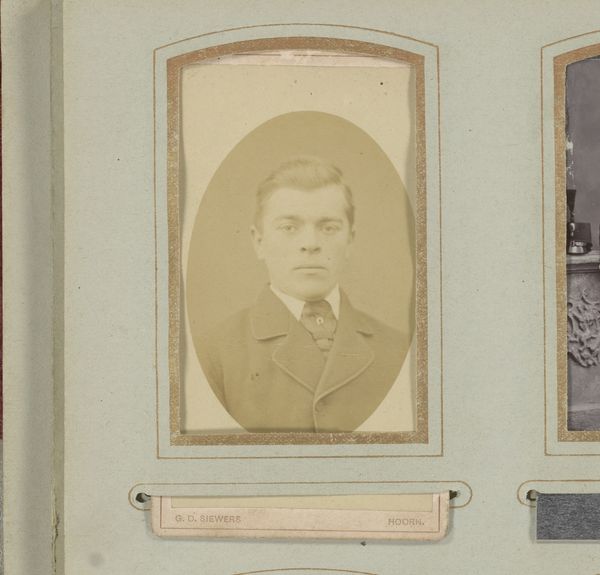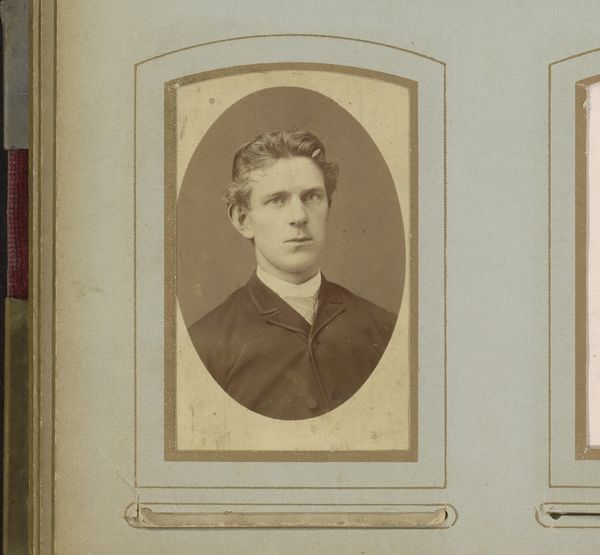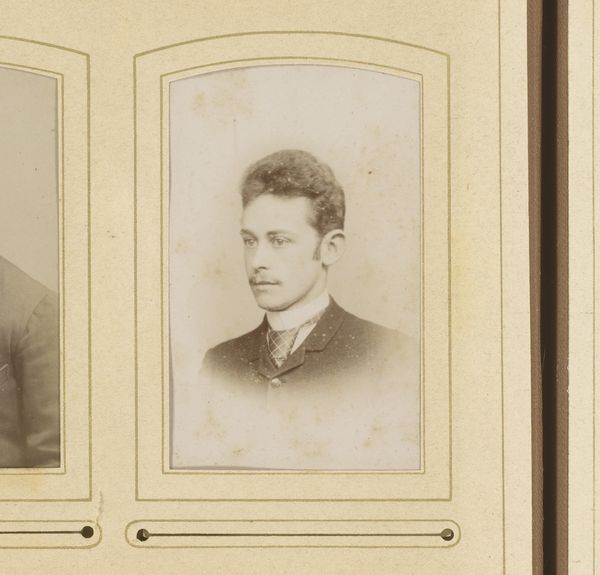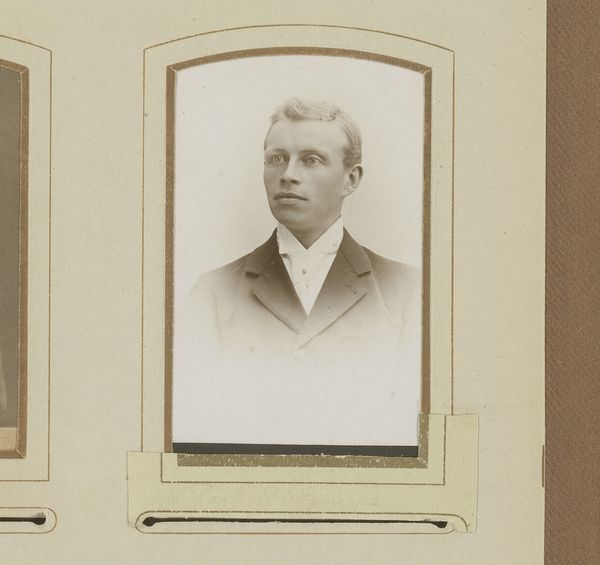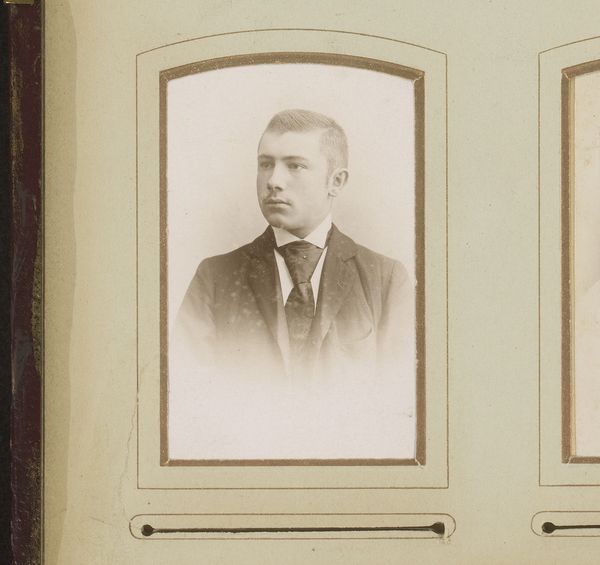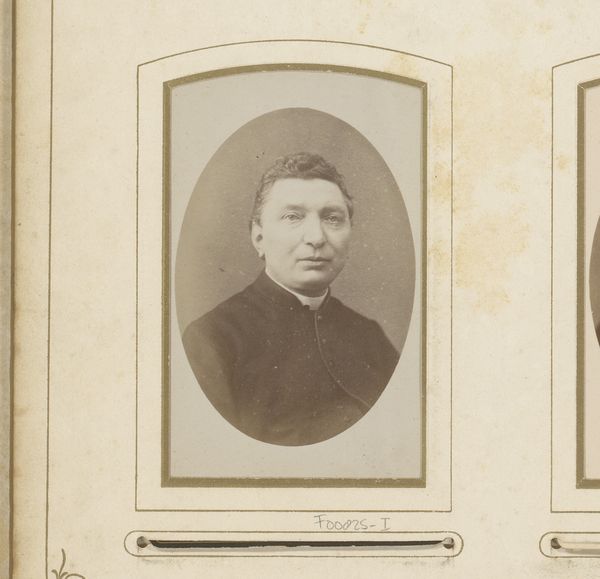
photography, albumen-print
#
portrait
#
photography
#
albumen-print
#
realism
Dimensions: height 82 mm, width 50 mm
Copyright: Rijks Museum: Open Domain
Curator: This is "Portret van een jonge man," or "Portrait of a Young Man," created between 1861 and 1890, from the Rijksmuseum's collection. It’s an albumen print. Albert Greiner captured this striking image. Editor: My first thought is its melancholic quality. The tones are so muted, almost sepia. It creates a feeling of distance and perhaps introspection. There's a compelling geometry at work here too, especially in how the frame echoes the lines of the sitter's face. Curator: I think that sense of distance comes from it being a portrait; it's about identity and representation. Photography like this made preserving and propagating the image and status of one’s self and kin easier, almost a memorial. Editor: And what about the choice of albumen print? The materiality adds a particular texture and tonal range to the image. I am interested in the soft gradation of light across his face versus the firm geometry in the portrait's decorative framing. Curator: The albumen print was extremely popular at the time due to its crisp detail. It connects with realism, focusing on representing the world in front of the lens. Photography like this allowed new demographics to capture and hold likeness in unprecedented ways, like capturing light, in this case the image of this anonymous young man and making it tangible, preserved through time and technique. Editor: But what does the act of framing itself communicate? We are talking about creating layers of visibility and constructing a field for contemplation. This enhances a sensation of looking both at something specific and something that floats suspended in cultural and social codes. Curator: You're absolutely right, these framed images create an idea of preciousness and preservation; not just capturing an image but almost canonizing that image and identity. The borders of the image are further protected within literal framing. It creates this image's feeling of permanence. Editor: Precisely, Albert Greiner does so much here by making an ordinary man an artifact, but doing so with soft photographic gestures of tonality, frame and form. Curator: Thinking about what these techniques offer really provides a portal to considering past perceptions of beauty, identity, and representation. Editor: Agreed, the stark intimacy of the photographic process alongside structural nuance provides a moment for broader contemplation.
Comments
No comments
Be the first to comment and join the conversation on the ultimate creative platform.
